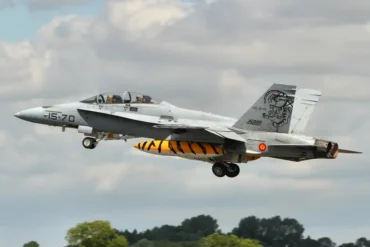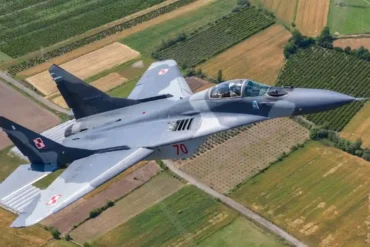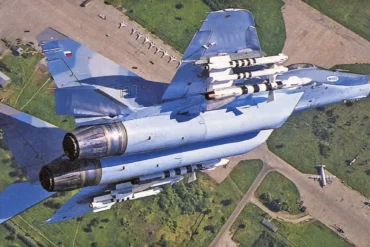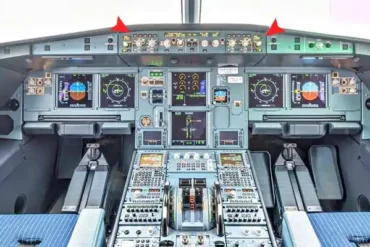The MiG-29, one of the most iconic fighter aircraft ever designed, has captured the imagination of aviation enthusiasts and experts alike. Known for its agility, speed, and versatility, the MiG-29 is a formidable presence in the skies. One of the most impressive aspects of the MiG-29 is its ability to reach remarkable altitudes. In this article, we delve deep into the maximum altitude capabilities of the MiG-29, exploring its technical specifications, flight profile, and historical context.
Understanding the MiG-29’s Altitude Capabilities
The MiG-29 was developed by the Soviet Union in the late 1970s and was intended to be a multi-role fighter capable of engaging air and ground targets. One of the MiG-29’s most significant achievements is its ability to operate at extreme altitudes, which is crucial for both its combat and reconnaissance roles.
What Is the Maximum Altitude of the MiG-29?
The MiG-29’s maximum service ceiling is 18,013 meters (59,100 feet). This value represents the operational altitude at which the aircraft can sustain flight under normal conditions. However, this is just the beginning of the MiG-29’s altitude capabilities.
In certain circumstances, the MiG-29 has been able to climb much higher, with reported altitudes reaching up to 20 km (65,600 feet) and occasionally exceeding 23 km (75,400 feet) during special high-altitude operations. These impressive figures highlight the aircraft’s ability to push beyond its service ceiling under optimal conditions, such as with full afterburner acceleration and during specific high-altitude flight profiles.
Factors Affecting the MiG-29’s Altitude Performance
Several key factors influence how high the MiG-29 can fly, including its engine power, flight profile, and atmospheric conditions. Let’s explore these in more detail.
1. Engine Performance and Afterburner Use
The MiG-29 is powered by two RD-33 turbofan engines, which provide the necessary thrust to propel the aircraft to high altitudes. The engines are designed for supersonic speeds and can generate significant thrust, particularly when using afterburners. At altitudes above 12,000 meters (39,370 feet), the aircraft accelerates to Mach 1.7-1.8, which allows for rapid altitude gains. This ability to engage afterburners is a crucial factor in reaching higher altitudes.
In the past, the MiG-29 could reach altitudes beyond 20 km, as the aircraft would maintain Mach 1.9 during its ascent. However, due to changes in engine performance, such as the modification of the RD-33 engines, the maximum altitude now tends to be closer to 17-18 km. Despite these limitations, the MiG-29 remains a highly capable aircraft in terms of altitude performance.
2. Atmospheric Conditions and Temperature
The performance of any aircraft at high altitudes is also dependent on atmospheric conditions, particularly air temperature and air density. As the aircraft ascends, the air becomes thinner, and the engines’ efficiency decreases. This is especially true in warmer climates, where air density is lower. Therefore, it is recommended to undertake high-altitude flights in colder months, particularly from October to April, as colder temperatures at high altitudes provide better conditions for engine performance and aircraft stability.
3. Flight Profile and Climbing Techniques
To achieve the maximum altitude, the MiG-29 follows a specific flight profile known as the ballistic flight profile. This involves a sharp climb using maximum speed and thrust from an altitude of 12,000 meters. The aircraft accelerates and ascends rapidly until it reaches its service ceiling of 18,000 meters or higher. During this ascent, the MiG-29 can momentarily exceed its service ceiling by several kilometers.
After reaching its maximum altitude, the aircraft typically reduces its altitude and returns to a lower flight profile. This careful balance between acceleration, climb, and descent ensures that the aircraft can operate at high altitudes while maintaining optimal performance.
MiG-29’s Stratosphere Flights and the 23 km Milestone
During specialized missions, the MiG-29 has achieved remarkable altitudes, sometimes reaching the stratosphere. The stratosphere begins at around 10 km and extends up to 50 km. In some cases, pilots have managed to push the MiG-29 to altitudes beyond 23 km, a feat that was once more common when the aircraft was able to fly at Mach 1.9.
However, in more recent years, the MiG-29’s ability to reach these extraordinary altitudes has been somewhat limited due to changes in engine specifications and restrictions on high-speed flight. Despite these limitations, the MiG-29 remains a top contender for high-altitude flights, especially when configured for special missions.
The Role of MiG-29 in High-Altitude Flights
The MiG-29’s ability to perform high-altitude flights has made it a popular choice for Edge of Space Flights. These flights allow civilians and aviation enthusiasts to experience the sensation of flying at the edge of space, an exhilarating and unique opportunity. Typically conducted during colder months, these flights provide passengers with a once-in-a-lifetime experience, offering breathtaking views of the Earth from the upper atmosphere.
During these high-altitude flights, the MiG-29 often reaches altitudes between 17-18 km, with some flights pushing the boundary further to 19-20 km. The combination of speed, agility, and high-altitude performance makes the MiG-29 an ideal platform for such thrilling experiences.
Comparing the MiG-29 to Other High-Altitude Aircraft
While the MiG-29 is a formidable aircraft in terms of altitude, it is not the only aircraft capable of reaching such heights. Let’s compare its performance to some other notable aircraft.
MiG-25 Foxbat: The Record Holder
The MiG-25 Foxbat, a predecessor to the MiG-29, holds the World Altitude Record for an Air-Breathing Plane. On August 31, 1977, Alexandr Fedotov set a world record by reaching an astounding altitude of 37,650 meters (123,520 feet) in a special MiG-25 E-266M configuration. While the MiG-29 is highly capable, it cannot match the extreme altitude capabilities of the MiG-25, which was designed specifically for high-speed, high-altitude reconnaissance missions.
MiG-31 Foxhound: A Close Rival
The MiG-31 Foxhound, another aircraft from the MiG series, is also renowned for its high-altitude capabilities. With a service ceiling of approximately 20 km, the MiG-31 can operate at higher altitudes than the MiG-29 under certain conditions. However, the MiG-29 still holds the edge in terms of versatility and maneuverability, especially in combat scenarios.
Future of MiG-29 High-Altitude Flights
As technological advancements continue, the MiG-29 may undergo further modifications to enhance its high-altitude performance. With improvements in engine technology, aerodynamics, and flight control systems, it is likely that the MiG-29 will be able to achieve even higher altitudes in the future. However, even in its current form, the MiG-29 remains a highly capable aircraft that continues to impress both military and civilian aviation enthusiasts.
Conclusion
The MiG-29 is a remarkable aircraft with impressive altitude performance capabilities. While its maximum altitude of 18,013 meters (59,100 feet) is its official service ceiling, the aircraft has been known to exceed this threshold under optimal conditions, reaching altitudes of up to 23 km during specialized high-altitude operations. Despite recent changes in engine performance, the MiG-29 remains a powerful machine in the world of aviation, offering thrilling experiences for those fortunate enough to participate in high-altitude flights.
Whether for military operations or civilian Edge of Space Flights, the MiG-29 continues to captivate with its combination of speed, agility, and altitude performance, solidifying its place as one of the most iconic aircraft in modern aviation history.
















